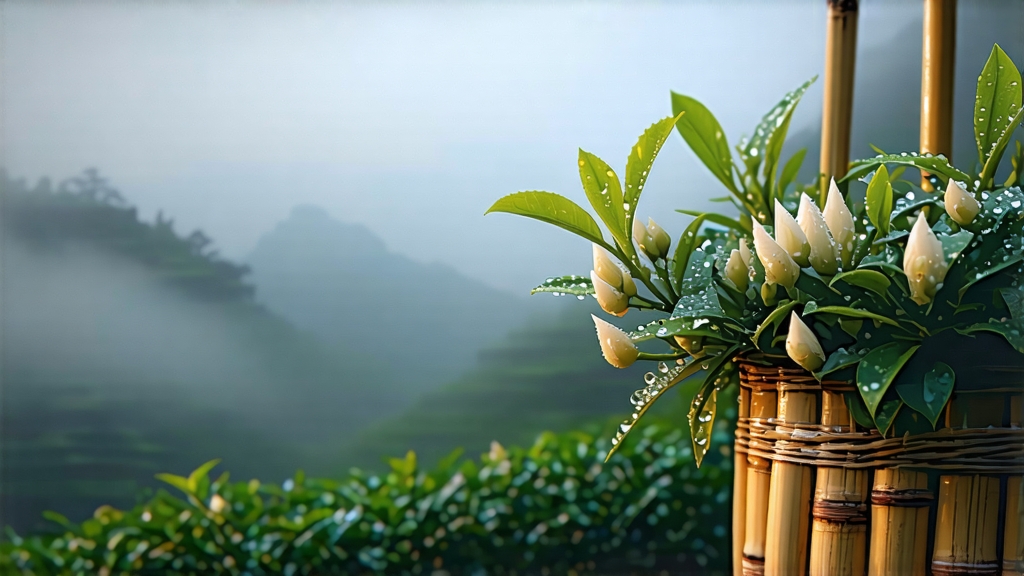
When the last winter chill loosens its grip on the coastal hills of northern Fujian, the tea gardens of Fuding and Zhenghe awaken under a veil of pearl-gray fog. It is here, in the brief window between early March and mid-April, that the most coveted expression of Chinese white tea—Bai Hao Yin Zhen, literally “White Hair Silver Needle”—is coaxed from the earth. To international drinkers accustomed to the dark heft of Assam or the smoky swagger of Lapsang, Silver Needle seems almost ethereal: a liquor the color of pale chardonnay, a fragrance that drifts between freshly peeled lychee and a walk through wet pine, and a sweetness that arrives long after the cup is empty. Yet behind this delicacy lies a history of imperial tribute, a craft that borders on monastic discipline, and a flavor lexicon that can humble the most articulate sommelier.
Historical whispers place white tea’s birth during the Song dynasty (960-1279), but Silver Needle’s documented fame begins in the late 1700s when the Da Bai (Big White) cultivar, native to Fuding’s Taimu Mountains, was first selected for its oversized, down-coated buds. Legend claims that only virginal girls wearing cotton gloves were allowed to pluck the tender shoots, dropping them into wicker baskets lined with silk so that no rough surface bruised the trichomes. Whether apocryphal or not, the story underscores an enduring truth: Silver Needle is prized for what it lacks—bruises, friction, oxidation—more than for any additive flourish. By the Qing dynasty it had become one of the “Ten Tributes of Min,” carted northward to the Forbidden City along narrow mountain tracks, its value measured in silver taels equal to its weight.
Today the protected geographical indication (PGI) restricts authentic Silver Needle to two counties—Fuding and Zhenghe—each offering micro-climatic nuances. Fuding’s granitic soils and maritime breezes yield buds that are plumper, their down almost luminescent; the cup is bright, orchid-laced, with a cooling finish reminiscent of cucumber skin. Zhenghe, higher and more humid, produces slimmer needles whose liquor is deeper, honeyed, sometimes whispering of dried apricot. Purists debate the superiority of one terroir much like Burgundy lovers quarrel over Pommard versus Volnay, but both styles share the same genetic passport: the Da Bai or Da Hao cultivars whose buds can exceed three centimeters and swell with amino-rich polyphenols.
Harvest begins when the morning thermometer hovers between 15 °C and 20 °C and the bud-to-leaf ratio reaches the mythical “single spear” state—no leaf, just an unopened needle. Experienced pickers work counter-clockwise around each bush, nipping the stem with a thumbnail so the bud drops intact. Within minutes the harvest is laid into shallow bamboo trays, never deeper than two centimeters, to avoid self-bruising under its own weight. From here the buds enter the most critical phase: withering.
Unlike green tea, whose enzymes are pan-fired into submission, Silver Needle is allowed to keep breathing. Traditional withering happens in two stages. First, the trays rest in a sun-dappled, north-facing loft for 24–36 hours; the buds lose roughly 40 % moisture while chlorophyll gently breaks down into pyrazines that lend the characteristic “fresh hay” note. Workers shuffle the trays every hour so each needle receives identical photonic caresses. Night brings the second stage: the buds are stacked in a controlled room kept at 22 °C and 65 % humidity where they “sleep” another 36–48 hours. During this dormancy, non-enzymatic oxidation occurs—technically not fermentation, yet enough to convert catechins into theaflavins and thearubigins, gifting the tea its pale gold hue and satin mouthfeel. When the moisture content drops to 8–9 %, a soft charcoal bake at 40 °C for twenty minutes halts the process without adding roast flavor. The finished tea is sorted by hand under full-spectrum light; any needle that has browned or curled is removed, leaving only straight, silvery spears.
Western aficionados often ask why Silver Needle is not rolled or shaped. The answer lies in Daoist